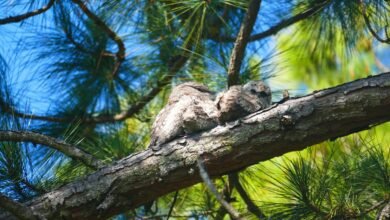Sydney takes ~ Made in Paradise

Memory
‘Memory Is Creation Without End’ is a small museum of art.

Japanese sculptor Kimio Tsuchiya salvaged and re-configuring stones created by forgotten quarry men and stonemasons.

Each piece of stone

carved by stone-masons long ago

now darkened with age

testifies to their lost function

and to the loss of those old buildings

in the collective memory.[i]

Made in Paradise

Customs House is built of Pyrmont sandstone, an enlarged and redesigned version of the original. It stands on reclaimed land, on the site of the first jetty built by convicts in 1788. Three Pyrmont quarries provided most of the sandstone for the classic buildings of Sydney. They were called Paradise, Purgatory and Hellhole, named by the Scottish quarrymen who worked there in the 1850s. Purgatory and Hellhole demanded a lot of work for lower quality stone that only lasts for about 100 years in exposed areas.

(The Cadigal used harder stone tools to engrave into the soft sandstone.)
Tarpeian Way

The Tarpeian Way overlooks the forecourt of the Sydney Opera House via a rocky escarpment, where ‘Memory Is Creation Without End’ lies.
 The name refers to the rocky point in old Rome used for executions. The standard method of execution was by strangulation in the Tullianum. The rock was reserved for the most notorious traitors who were thrown off it.
The name refers to the rocky point in old Rome used for executions. The standard method of execution was by strangulation in the Tullianum. The rock was reserved for the most notorious traitors who were thrown off it.

This is one of Sydney’s oldest sandstone quarries, the Tarpeian Precinct is now a high wall of wonderful textures which I have written about before. Poem

From Artless
I want to restore the balance in aesthetic considerations and experience. See naturally weathered sandstone on the shore of Sydney Harbour > https://photovoltaicpoetry.com.au/curlew-camp-walk-1/
This rock is mineral wash laid in the shallows of a giant delta from a river five times the size of the Amazon. Does this river in flux in another life have a name? The founder of palaeontology, Georges Cuvier, realised Earth is immensely old and has gone through huge changes. He established extinction as a fact, but thought new species emerged after periodic catastrophic floods. The well-washed quartz contains few organics. No mass deaths, no fossil beds or limestone. Occasional fish are found fixed by a clay lens. Dead-plant-coal is compressed underneath. This beautiful indigestible flesh of Gaia sunders at the macroscopic becoming a soil of sorts which flora has adapted to.

The textures, shapes and colours enrich abstraction and shy from concrete history, unlike Pentelic marble (used for the Parthenon), or Carrara marble (favoured by Roman and later Italian sculptors like Donatello and Michelangelo).
Heated glass glows red, then yellow, then white, and these are the modes of iron in sandstone, worked by nature then by craftsmen growing city walls. Sydney was quarried from Pyrmont’s three main sites, Paradise, Purgatory and Hellhole, named for the difficulty of working the material. You could say that these sandstone harbour works are by geology, air and water. A few pieces take the chiastic pose, some are chased stone. Can aesthetic properties take us to the story of these rocks, and take us out of our habitual ways of being in an environment? Or is the question really that, in the midst of our tragedy (the destruction of nature, the snail pace of reconciliation).
Are we in Purgatory?
The Divine Comedy is a long narrative poem by Dante Alighieri. The poem begins on the night before Good Friday in 1300, Dante is thirty-five years old, ‘halfway along our life’s path’ (half of the biblical lifespan of 70). He is lost in a dark wood in danger from wild animals (a lion, leopard, and wolf, cannot find a way through and is losing it, when the poet Virgil finds him and helps him negotiate the underworld
Having survived the nine concentric circles of torment buried deep within Earth, Dante and Virgil reach the Mountain of Purgatory on an island at the bottom of the world. The Mountain is the only land in the Southern Hemisphere, created by a huge earthquake when Satan’s fall created Hell. The poem notes the different stars visible in the southern hemisphere, and Dante might have meant Terra Australis – and here we are.
‘Open your mind to what I shall disclose, and hold it fast within you’. Dante, Paradiso
[i] https://www.cityartsydney.com.au/artwork/memory-is-creation-without-end/



